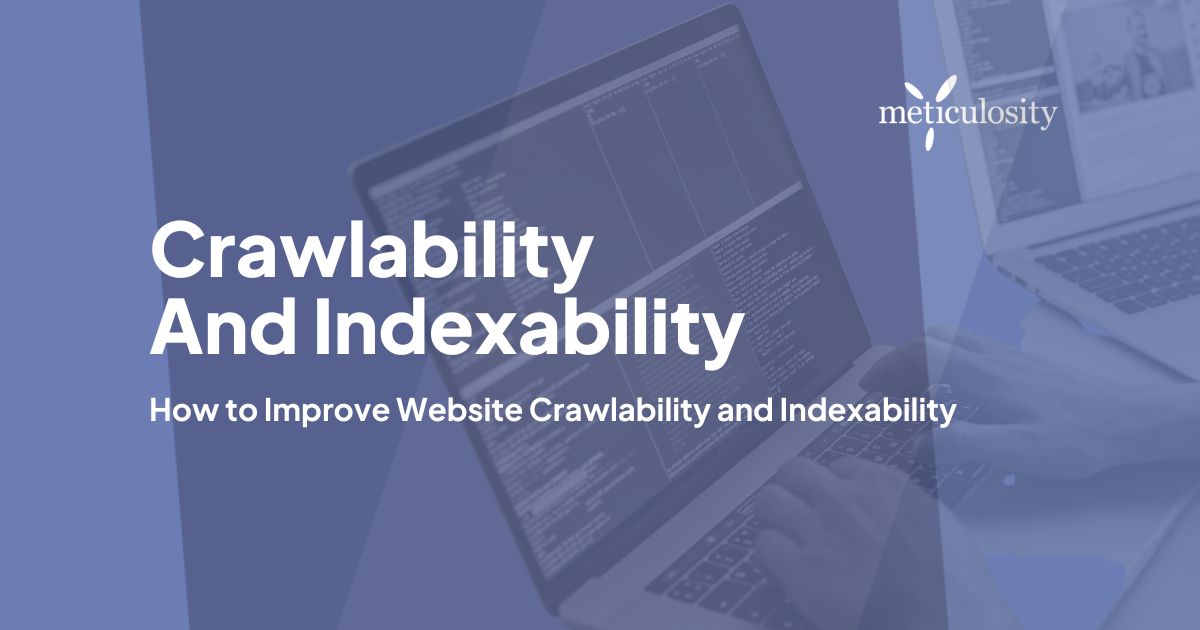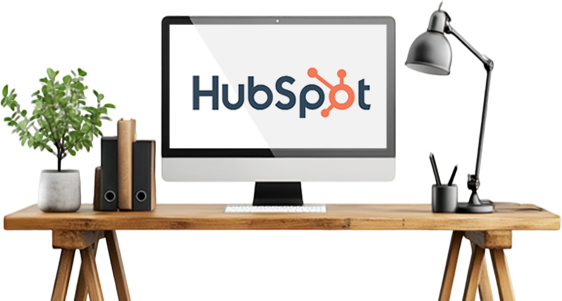-
So, you’ve built a great website, created amazing content, used a good SEO strategy, and curated backlinks from blogger outreach. However, you're still finding it really hard to rank in Google. You may ask yourself...
- Is my site crawlable?
- Is my site indexable?
What is Website Crawlability?
Website crawlability refers to the ease of or ability of Google to crawl your website content and discover all site links and their destination pages without encountering dead-ends. How well the site is designed, coded, and formatted for users determines it.
How Does Website Crawlability Affect SEO?
When it comes to SEO, one of the most important factors is website crawlability. If your website is difficult to navigate, search engines will have more difficulty indexing and ranking it. Your website will most likely not appear in the search engine results page, resulting in fewer website visitors.
How Does Google Crawl Websites?
Crawling helps Google find the most relevant information for its users by scouring website pages and ranking them in search results. The Googlebot (or "spider") is the fetching program.
It accomplishes this by parsing the HTML and searching for specific elements such as titles, headings, paragraphs, images, and links. This data is then used to generate search engine results pages (SERPs), which appear after an end-user makes a query into Google's search bar.
How Often Does Google Crawl a Website?
Google should crawl your website somewhere between once every four days and once every thirty days, depending on how active it is. Due to Googlebot's tendency to look for new content first, sites that are updated more frequently typically receive more frequent crawls.
How to Check Your Website's Crawlability
Website crawlability is one of the most important factors in website optimization. A well-crawled site leads to higher search engine rankings and more organic traffic. However, checking your website’s crawlability can be tricky, so here are a few easy ways to check your website’s crawlability.
.png?width=1000&height=500&name=blog%20featured%20image%20(3).png)
- Use content analysis tools that allow you to scan your entire website for errors and typos that could prevent it from being crawled by search engines.
Pro tip: Use our free website grader tool to test your website's crawlability. - Use a Google PageSpeed tool to provide a detailed analysis of your page load time and how fast different sections of your site are loading. This information can help you identify areas where improvements can be made.
- Use Crawlability Tools to scan and examine Robots.txt files to determine a link's crawlability and indexability status.
- Keep track of changes you make to your site over time using Google Analytics or StatCounter web server statistics monitoring tools. This will help you identify any issues with Page Rank or other crawling metrics that may have occurred as a result of changes you've made.
What is Website Indexability?
Indexability is the ability of search engines to index and display your website properly. It's a key factor determining how well your website will rank in Google and other search engines.
Some factors that affect indexability include:
- The quality of your content
- The design and layout of your website
- The speed and accessibility of your website
- How well do you optimize your pages for search engines
- On-page elements such as titles, headings/subheadings,404 errors pages, and other essential tags
What Makes a Good Site Structure?
Site structure is the foundation of your website. It's the skeleton that holds everything else up, and it needs to be strong if you want your site to look good, function well, and attract customers. A good site structure can make your website easier to navigate and help you organize your content in an easy-to-understand way.
There are a few key elements to consider when designing a site structure:
- It is a well-organized and easy-to-navigate site.
- Clear and concise content
- Proper use of links and navigation menus
- Good use of images and video content
- Links to social media accounts
- An organized header section that includes the business name, address, and phone numbers
How to Improve Crawlability and Indexability
The technical and structural aspects of your website environment influence crawlability.
Google may stop crawling if it discovers broken links, technical issues, or an inefficient site layout.
.png?width=1000&height=500&name=blog%20featured%20image%20(4).png)
The goal is to create an efficient site setting to influence the spiders’ ability to crawl your site.
Efficient crawling starts with good internal linking, site structure, and no crawl errors.
1. Internal Linking
Internal links are links that point from within your site to other pages on your site. Users can explore additional content and find related information more easily when they click on these links.
Internal linking helps visitors navigate your website more easily, which leads to higher conversion rates and better user experience. Also, ranking well in search engine results pages (SERPs) often requires high levels of internal link quality.
Therefore, it's essential to focus on building strong relationships between pages within your site so that all content is easy to find and access.
Remember: The crawler can’t index pages it doesn’t find.
2. Site Structure
As I mentioned, your site should be interconnected with relevant page-to-page links. The crawler (or site visitor) should be able to access any page within 1-2 clicks (3 max). Pages nested too deep present a poor site structure and a bad user experience.
.png?width=1000&height=500&name=blog%20featured%20image%20(5).png)
To help Google understand your content better, the site structure must have link relationships around core topic pillar pages that link to related sub-topics commonly referred to as content clusters.
3. Update and Add New Content
One of the best ways to improve crawlability is to regularly update your content. This means creating new articles, updating old ones, and adding fresh images and videos as necessary.
You should also use keyword placement throughout your content to target the right keywords and increase traffic from relevant search engines.
4. Fix Crawl Errors
If the search engine follows a link but cannot access the page while crawling, there won’t be anything new for indexing. Your web server may return any of the following HTTP errors: 500, 502, 503, 404, etc.
Crawl errors will show up in Google’s Search Console (previously Google Webmaster Tools), so you’ll want to fix them right away.
.png?width=672&height=336&name=blog%20featured%20image%20(6).png)
5. Fix Broken Links
Broken links occur when moving or renaming web pages. You may unintentionally create a dead-end link without making a site-wide search and replace. The crawler can’t access pages from a broken link. Generally, you'd see a 404 error - page not found.
6. Crawler Access with Robots.txt
Robots.txt is a utility file living within your site and crawled by Google. It has special block/allow indexing instructions which helps Google's "crawl efficiency" and "indexing accuracy". Note that meta tags can also deliver per-page instructions on a case-by-case basis.
7. Page Load Speed
If you want your website to be easily crawled, you need to make sure that the pages take minimal time to load. Website speed is one of the most important factors when ranking in the search engines. Not only does a slow website page can frustrate and annoy visitors, it can also negatively affect your SEO score.
Here are a few tips for speeding up your pages:
- Minimize image sizes as much as possible.
- Avoid using plugins or scripts that add additional layers of complexity to your site's design or codebase.
- Optimize your CSS files for speed and performance.
- Minimize 404 errors - Make sure all relevant pages exist and that there are no typos or missing digits in URLs.
8. Sitemap.xml
A sitemap lists your site's important web pages and tells search engines about your content. The sitemap also provides valuable metadata, such as the last page update.
By including a well-optimized sitemap with each of your pages, you'll ensure that all of your website's content is easily accessible and optimized for indexing by Googlebot. Make your sitemap available to Google by adding it to your robots.txt file or directly submitting it to Search Console.
9. Content Quality
Nothing attracts search engines more than authoritative, high-quality content. But not all content is created equal. Remember that it must meet the organic keyword litmus test and provide something of value to the consumer.
10. Avoid Duplicate Content
It's important to ensure all your content is original and unique. Duplicating any content on your site can harm your website's crawlability and will only create more work for search engines, and it's likely that pages with duplicate content will rank lower than those without.
Crawlability Testing and Index Monitoring Tools
Google SEO Tools
Use Google’s go-to list for SEO tools. Here are a few popular ones:
- PageSpeedInsights to analyze pages for speed and usability improvement suggestions.
- Mobile-Friendly Test is another great tool to show mobile performance.
- Google Search Console provides rich insights into your site's crawlability and indexing. A place to submit your XML sitemap, examine structured data, and much more.
SEO Site Audit
Run a site audit regularly to maintain good SEO health. A site audit tool will give you a comprehensive overview of your site’s overall health, allowing you to stay on top of problems.
The SEMrush Site Audit provides extensive data, running 20 different checks that focus on your site's ability to crawl and index. We use this tool to run automatic weekly audits, so we’re always optimizing.
Ready to Get Started?
Of course, no tool will make a bit of difference if you don’t follow through on its suggestions, so be diligent in your efforts. If you do, you’ll improve your website's crawlability and gain favor in the search engines.
If you have questions about how to optimize your website for search engines, reach out to our SEO experts today.
SEO

How to Improve Website Crawlability and Indexability
Website crawlability and indexability are essential for strong SEO. Here are some tips to improve your website and attract more organic traffic.


Ally Bootsma
Ally creates content for our clients and manages their social media accounts. In her free time she loves to be outdoors and eating delicious food.
Subscribe to our newsletter
Get our latest blog posts and news on all things Inbound delivered to your inbox.

HubSpot Solutions Partners Meticulosity and Scitecs Launch Meticulosity Global to Expand HubSpot Impact Across EMEA & APAC Regions
Meticulosity and Scitecs unite to launch Meticulosity Global, bringing world-class HubSpot expertise and cross-regional delivery to EMEA an...

Meticulosity CEO David Ward Wins 2025 GTM Leadership Award
Meticulosity CEO David Ward wins the 2025 GTM Leadership Award for driving operational excellence and innovation in the HubSpot partner eco...




